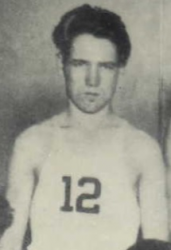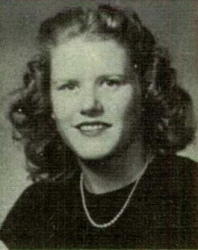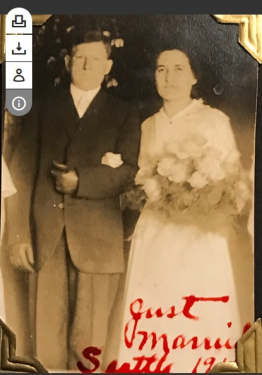
 |
|
|
||
|
DONALD CLAYTON O'TYSON 'Sonny' |
||||
|
Engagements: • World War II (1941 - 1945) |
||||
| Biography: | ||||
|
DONALD CLAYTON O'TYSON, also known as Sonny, was born in Yakima, Yakima, Washington on 28 Nov 1921 to Claude Eugene and Katherine "Kate" (Ames) O'Tyson. They married 07 Apr 1915 in Seattle, King, WA. Donald was the third of five children born to his parents. His siblings were: Dorothy Helen Bird (1916-1999), Robert Ames (1919-2015), Gwendolyn Alice Metzer (1925-2010) and Palmyra Morano (1929-1990). Claude, born in 1876, was a native of Georgia whose occupation early in his life was farming. By 1907 he had moved to Seattle where his occupation was motorman for the Hawley Co. On 05 March 1907, he threw a friction clutch on a piece of machinery that suddenly flew into pieces with a noise like an explosion. Claude was seriously injured but recovered. Several years later, he lived in Stanislaus, Tuolumne, California where he worked as an electrician at a power plant. Over the course of his life he was bi-vocational: electrician and farmer. Kate Ames was a native of Hahns Peak, Routt, Colorado born in 1889. By 1900, her family had moved to Yavapai county, Arizona. By 1915, her parents, Oscar Joseph and Buena (Fly) Ames, were residents of Seattle, WA. By 1916, the O’Tyson family had migrated toward the eastern part of Yakima county Washington. According to the 1930 US census, Claude was farming to earn a living to support five young children and two adults. The family navigated the depths of the Great Depression with persistence and strength. Employment opportunities were scarce in Yakima so by the mid-1930s the family moved to Glenwood in Kitsap county where employment chances were far better. In 1938, the O'Tysons moved to Port Orchard also in Kitsap county being closer to one of the largest employers in the region - Puget Sound Naval Shipyard (PSNS). Katherine worked at PSNS during WWII. Upon the death of her husband in 1946, Katherine moved to Bremerton where she met and later married retired dentist, Dr. Ernest Everett Creelman, on 17 Oct 1949. On 01 Sep 1939, war began in Europe. The O’Tyson sons, Robert and Donald, worked when they could find employment. However, their patriotic verve and strong sense of responsibility to contribute to the family financially, and their desire for adventure and the opportunity to learn a trade might have been the catalyst that propelled them to obtain applications at the Tacoma, WA, US Navy Recruiting Station (NRS) that fall of 1939. There the brothers completed preliminary entrance examinations, submitted personal references, completed administrative paperwork which included submitting valid birth certificates and passing background checks. Because the boys were under 21 years of age, Claude O’Tyson gave his permission for his sons to enlist. They were accepted for enlistment in Tacoma and placed on a waiting list. In early December 1939, they received notice from the NRS to report on 12 Dec for enlistment at the NRS, Seattle, King, WA. Bright and early on Tuesday morning, 12 Dec 1939, brothers, Robert and Donald O’Tyson, traveled the 25 miles from Port Orchard, WA to Seattle where they completed physical and dental exams; took the oath of allegiance and enlisted as Apprentice Seaman (AS) in the US Navy for a term of six years. Their starting pay was $21.00 per month. Robert’s naval service number was NSN: 385-84-41. Donald’s naval service number was NSN: 385-84-40. The new recruits entrained in Seattle later that day prepared to make the two day, 1000+ mile ride to the Naval Training Station (NTS), San Diego, CA. Once they arrived at NTS the eight weeks of recruit training began. Upon graduation from training in early February 1940, the two new sailors, were granted 10 days of leave to visit family and friends before reporting to their first assignment on board the heavy cruiser, USS Chicago (CA-29). The O'Tyson brothers reported on board Chicago on 17 Feb 1940. Over the next 18 months the brothers requested to change their career path from Seaman to Fireman. Permission was granted so their rate was changed to Fireman Third Class (F3c). Both were advanced to Fireman Second Class (F2c) before F2c Donald O’Tyson received orders to detach from Chicago and report for assignment to Asiatic-Station in Manila, Philippines via the transport ship, USS Henderson (AP-1). F2c O’Tyson reported on board Henderson on 20 Aug 1941. Henderson steamed out of Honolulu on 23 Aug bound for the island of Guam (06 Sep). Underway the same day, she followed a course for Manila arriving on 14 Sep 1941. F2c O’Tyson disembarked from Henderson and reported for duty on board the destroyer, USS Peary (DD-226) later that day. Meanwhile, now Fireman First Class (F1c) Robert A. O’Tyson remained on board Chicago. On 30 Jan 1943 during the battle of Rennell Island, Machinist’s Mate First Class (MM1c) Robert A. O’Tyson, a senior engineering petty officer, was at his battle station in engineering on board Chicago when she was attacked and sunk by Japanese bombers after suffering four torpedo hits, 3 of which blasted into engineering spaces. O’Tyson miraculously survived and was one of 1,049 survivors rescued by US destroyers and the oceangoing tug, USS Navajo (AT-64). He would survive the war. PRELUDE TO WAR By autumn of 1940, the unstable international situation in Indo-China and Japan’s persistent aggression against the Chinese made the presence of the Asiatic Fleet ships untenable, so Adm. Thomas C. Hart, the Commander in Chief, U.S. Asiatic Fleet, ordered the withdrawal of all major Navy blue-water ships from China on 21 October 1940, leaving only the gunboats on the Yangtze River. When Peary departed from Shanghai a short time later, it would mark the end of the US Navy’s blue-water ships presence in Chinese ports. As the Asiatic Fleet reduced its presence in China, Peary's operations shifted to the Philippine Archipelago. During 1941, the bulk of her activities included training and patrols around the Philippine Islands. Admiral Hart began evacuating all of the families of his married sailors home in late 1940. There was push-back from the resentful spouses who initially declined to leave their husbands. It was only a threat to indefinitely restrict their spouses to their ships without leave that finally convinced the families; it was time to comply with orders and return to the continental United States (CONUS). Many traveled home on the President's Steam Ship Line. Admiral Hart's directive probably saved many family members from internment by the Japanese or worse. For many of the married and unmarried sailors alike, it was the last time they would ever see their families. The threat of hostilities between the United States and Japan grew closer to the boiling point as the year 1941 began. Then, in July 1941, as Japanese aggression intensified with their move south into lower Indo-China, Admiral Hart warned his officers that he had no doubt that war would come although he didn't know how or when hostilities would start. Hart trained his destroyer crews hard keeping them on a war-footing for extended periods and away from Cavite naval base as much as possible exercising his "defensive deployment." On 25 November 1941, two days in advance of the "war warning" which predicted that hostile Japanese action in the Pacific was imminent, Admiral Hart directed units of the Asiatic Fleet including destroyer tender USS Black (AD-9), and other ships of Destroyer Squadron Twenty-Nine (DesRon) 29, to exercise his “Defensive Deployment” well south of Manila. The ships arrived in Balikpapan, a major oil port on the eastern coast of Borneo, on the morning of 29 Nov 1941. Some ships remained at Cavite for operational reasons. Peary was one of four destroyers to remain in Cavite with the USS Pillsbury (DD-227), USS Pope (DD-225) and USS John D. Ford (DD-228). Govern Yourself Accordingly. On 7 December 1941 [8 December east of the International date Line], the Japanese onslaught began across a wide area, from the Far East to Pearl Harbor. When word was received that the Japanese had attacked Pearl Harbor. Adm Hart direct his forces to "Govern Yourself Accordingly." Several days later all hell broke loose from the skies over Manila Bay! Wednesday morning, 10 Dec 1941 in Manila broke with clear skies. Just passed high noon and without warning, scores of Japanese fighters and bombers appeared overhead and commenced to wreak havoc on the naval facilities and ships still inport. When the attack was over, most of the naval base was reduced to rubble. Peary had been struck by a bomb which caused extensive damage. A number of her crew were killed, wounded and missing further reducing her manning complement further below acceptable levels. According to Peary’s deck log, F2c Donald C. O’Tyson was on board during the attack, but he was not wounded. After the 10 Dec attack, Peary's remaining crew set to work repairing their ship. It was a Herculean effort performed by the crew in conjunction with the facilities of Atlantic Gulf and Pacific Company to effect the minimum repairs in order to make Peary sea-worthy. Because a large number of Peary's crew were lost, a call for replacements was made by Peary's CO to COMAF and Commandant, Sixteenth Naval District (COM16ND) in Manila. Many sailors from other commands would be transferred to Peary over the next several weeks to help fill her manning shortages. On 23 Dec 1941, Peary got underway on her first war mission; an antisubmarine patrol assignment in the Verde Island Passage between Luzon and the Philippine island of Mindoro. She returned to port late on 24 Dec. On Christmas Day, she made passenger pick-up and delivery runs to Corregidor and Manila. The day after Christmas 1941, the CO's of Pillsbury and Peary were ashore at a conference with COM16ND, Rear Admiral Rockwell, to discuss releasing their ships to join other US forces in the Netherlands East Indies when enemy bombers suddenly appeared overhead. Peary was attacked by five flights of Japanese high level bombers. Each flight consisted of between 6 to 9 planes. Peary’s new CO, Lt Bermingham, watched from ashore as his new executive officer, Lt Martin M. Koivisto, skillfully maneuvered Peary around Manila Bay dodging bomb after bomb for several hours. Though she suffered a few near misses, Peary emerged virtually unscathed. Later that evening, Peary and Pillsbury were ordered to put to sea and proceed south by the best route and join Task Force 5 at Soerabaja, Java. For safety, each ship was to proceed independently. Peary's voyage south was eventful and dangerous as the Japanese held mastery of the air and sea. Intelligence information provided to Peary just after her departure from Manila indicated that Japanese warships probably lurked along her intended route to Surabaja. Peary’s CO changed her course and destination to Darwin, Australia. Peary traveled only by night and during the day she was brought close to shore and tied up to trees and covered with palm fronds and green paint in order to blend with the flora of the various islands. Several times, Japanese bombers flew overhead but did not detect the ship. About 0800, 28 Dec, Peary sighted a large Japanese four-engine seaplane shadowing her. It was a Kawanishi HK6 "Mavis" flying boat. About 1400, three more Mavis' joined and the attacks began with each plane making two runs dropping a single bomb estimated at 500 pounds. During the attacks, gun crews on Peary kept up continuous fire at the enemy planes. She maneuvered successfully avoiding the bombs while her gun crews threw up a curtain of anti-aircraft fire. Finally, after the flying boats completed their attacks, two twin engine, single wing torpedo planes appeared and commenced an attack on Peary dropping two torpedoes off the port bow and two off the port quarter. Again, the skipper maneuvered the ship out of danger. However, after dropping their ordnance, the enemy torpedo planes returned to fired several strafing bursts which struck the stacks. They were driven off by heavy shipboard machine gun fire. About 1800, off Kema Island in the Bangka Strait, three Australian Lockheed Hudson patrol bombers were sighted approaching from astern. The aircraft challenged Peary via signal light and she responded. The pilot was seen to wave his arm. However, one of the planes assumed a glide bombing profile. Peary's anti-aircraft batteries opened fire and began maneuvering radically. One of her crewman lost his balance and fell overboard (he was picked up by a fisherman, but was turned over to the Japanese. He worked in a mine in Japan and was repatriated at the end of the war.). Each Hudson made two attacks dropping a single 250 pound shrapnel bomb. There were no direct hits but near misses caused extensive damage. Peary was hit in various places topside and in the engineering spaces. The shrapnel hit in the engineering spaces and knocked one of Peary's two main engines out of commission. One crewman was killed when he was struck by shrapnel (S1c Kenneth E. Quinaux, a machine gunner, was buried at sea during services at 2000 on 29 Dec 1941.). Prior to departing, each Hudson made a strafing run on the ship. It was learned later that the Australian aircraft had misidentified the US ships because of their resemblance to a class of Japanese warship. Peary anchored at Port Darwin at 0840, 03 Jan 1942 after a 2100 mile plus transit from Manila, Philippines to Darwin, Australia. Within a week of arriving at Darwin, twenty-eight enlisted men and officers became ill with a virulent form of Malaria or Dengue Fever, contracted when the ship anchored off remote Maitara Island near Ternate in the Halmakeras. It had been necessary to stop there to make repairs after being attacked by Australian aircraft. Eventually eight men would die from the diseases. Peary received tender availability services from Black Hawk to affect temporary repairs and make Peary seaworthy. Those repairs were completed on 22 Jan 1942. Peary then assumed submarine escort duties. On 29 Jan 1942, Peary steamed from Darwin bound for the island of Timor on a secret mission. She was to deliver a “special duty” contingent of sixteen US Army personnel, 100 drums (5300 gal) of avgas and 50 gallons of lube oil after midnight on 31 Jan 1942 to a Royal Australian Air Force (RAAF) field. The fuel and lubricant was to be used by US Army Air Force P-40s in the defense of Java. Five Peary crewmen manned the motor whaleboat used to ferry the men and cargo ashore. Problems quickly developed. As the boat approached the shore it went aground and due to broaching seas it could not be towed clear. Because of the high sea state, it was not possible to remove the crew or return to them to the ship. The motor whaleboat crew were left ashore until such time as the tides shifted and seas moderated before they could be returned to the ship. She resumed her anti-submarine escort duties for USS Langley (AV-3) from Darwin to Fremantle, Australia between 08-13 Feb 1942, and she steamed with USS Houston escorting a Darwin-Koepang convoy from 14 to 18 Feb 1942. She was also searching for an elusive Japanese submarine contact which reduced her fuel supply such that she had to return to Port Darwin to refuel. Her luck was about to run out. Peary returned to Port Darwin and anchored about 0100, 19 Feb 1942. About 1045, Port Darwin was subject to a massive air attack by a combined Japanese carrier and land base force of over 200 fighters and bombers. Peary, at anchor, was hit by five bombs. The fifth bomb, an incendiary, exploded in the after engine room opening the ship to the sea. She sank, stern first with her anti-aircraft guns still firing as the last enemy planes left the area. Eighty-eight officers and men including the commanding officer were killed in her sinking; 57 survived, 20 of whom were wounded. F2c O’Tyson was believed to have gone down with his ship. He was listed as missing in action on 19 Feb 1942. However, his name was misspelled on the payroll list used to validate the Peary crew manifest at the time of the sinking. His surname was spelled O’Trace vice O’Tyson. On 10 April 1942, Mr and Mrs Claude O’Tyson received a telegram from the Navy Department. It read in part; "The Navy Department deeply regrets to inform you that your son, Donald Clayton O’Tyson, Fireman Second Class, US Navy is missing following action in the performance of his duty and in the service of his country." The following year, Mr and Mrs O’Tyson received a letter from the Secretary of the Navy, Frank Knox, dated 17 March 1943. It read; "After a full review of all available information, I am reluctantly forced to the conclusion that your son, Donald Clayton O’TYSON, Fireman Second Class, U.S.N., is deceased, having been reported “missing in action' on the 19th day of February 1942, being a member of the crew and serving aboard the U.S.S. Peary when that vessel was sunk in the port of Darwin, Australia. In accordance with Section 5 of Public Law 490, 77th Congress, as amended, your son's death is presumed to have occurred on the 20th of February 1943, which is the day following the day of expiration of an absence of twelve months. I extend to you my sincere sympathy in your great loss and hope you may find comfort in the knowledge that your son gave his life for his Country, upholding the highest traditions of the Navy. The Navy shares in your sense of bereavement and will feel the loss of his service." F2c O’Tyson was posthumously awarded a Purple Heart, Combat Action Ribbon, American Defense Service Medal w/Fleet Clasp (bronze star in lieu of clasp), Asiatic-Pacific Campaign Medal w/Fleet Clasp and two bronze stars (one bronze star in lieu of clasp), US Army Presidential Unit Citation, Philippine Presidential Unit Citation, Philippine Defense Medal with a bronze service star, and the WWII Victory Medal. ---------------------Fireman O’Tyson’s family received a personal commemoration from President Franklin D. Roosevelt. It reads: In grateful memory of Donald Clayton O’TYSON, who died in the service of his country at Darwin, Australia, ATTACHED U.S.S. Peary, 20 February 1943 (presumed). He stands in the unbroken line of patriots who have dared to die that freedom might live and grow and increase its blessings. Freedom lives, and through it, he lives -- in a way that humbles the undertakings of most men. //s// Franklin D. Roosevelt, President of the United States of America ---------------------- Citation of Units of Both Military and Naval Forces of the United States and Philippine Governments. --489-- As authorized by Executive Order No. 9075 (sec. II, Bull. 11, W.D., 1942), a citation in the name of the President of the United States, as public evidence of deserved honor and distinction, is awarded to all units of both military and naval forces of the United States and Philippine Governments engaged in the defense of the Philippines since December 7, 1941. (Later, it was called the US ARMY PRESIDENTIAL UNIT CITATION). By order of the Secretary of War: G. C. MARSHALL, Chief of Staff. ------------------------------ Philippine Republic Presidential Unit Citation Establishing Authority The Philippine Presidential Unit Citation was established by Headquarters, Philippine National Defense Forces, General Order Number 532 of September 14, 1946, as amended. Acceptance by the United States For service during World War II, acceptance is sanctioned by Public Law 80-314, which authorized the acceptance and wear of foreign decoration, medals, and awards in connection with services in World War II between the inclusive dates of December 7, 1941 and July 24, 1948. Effective Dates The Philippine Presidential Unit Citation has been in effect since September 14, 1946. Criteria The Philippine Presidential Unit Citation is awarded for extraordinarily meritorious service. The Philippine Republic Presidential Unit Citation has been awarded to United States military personnel who participated in the following: • World War II Service in the defense of the Philippines from December 7, 1941 to May 10, 1942. Service in the liberation of the Philippines from October 17, 1944 to July 4, 1945. All U.S. military units and naval vessels that earned any of the Philippine engagement stars are entitled to the Philippine Republic Presidential Unit Citation. Certain submarines which maintained physical contact with guerrilla forces during the Japanese occupation of the Philippine Islands. Online: https://rollofhonor.org/public/htmldetails.aspx?Cat=foreignaward&EntID=352 ------------------------------ Primary Sources: 1) Cox, Jeffery R., Rising Sun, Falling Skies, Osprey Publishing, UK, 2015. 2) Kehn, Donald M. Jr., In the Highest Degree Tragic, The Sacrifice of the U.S. Asiatic Fleet in the East Indies During World War II, Potomac Books, 2017. 3) Deck logs USS Peary retrieved 15 November 2021. 4) Northern Territory Library Roll of Honour: Browse location. www.ntlexhibit.nt.gov.au. Retrieved 20 November 2021. URL may not work. 5) Wikipedia page, USS Peary (DD-226), Retrieved 12 November 2021. 6) Wilde, E. Andrew, Jr. (Ed). U.S.S. Peary (DD-226) in World War II, Manila to Darwin, 12/10/41-2/19/42: Needham, Mass. : The Editor, 2007. http://destroyerhistory.org/assets/pdf/wilde/226Peary_wilde.pdf 7) Kehn, Donald M. Jr., A Blue Sea of Blood: deciphering the mysterious fate of the USS Edsall, Zenith Press, 2008. 8) Fold3 by Ancestry Navy Muster reports and Change reports 9) Ancestry.com Navy WWII muster and Change reports. 10) Winslow, W.G, The Fleet the Gods Forgot, The United States Asiatic Fleet in World War II, Naval Institute Press. Annapolis, MD. 1982. 11) Newspaper articles from the Kitsap Sun (Bremerton, WA) 12) Newspaper articles from The News Tribune (Tacoma, WA) -------------------------------- Link to USS PEARY memorial in Darwin, Australia with list of names of those lost in the sinking of the ship. It's a cenotaph. https://www.maritimequest.com/misc_pages/monuments_memorials/uss_Peary_memorial.htm ----------------- Bio sketch #428 compiled on 08 Jul 2023 by Gerry Lawton. Military Hall of Honor ID#154717 Find a Grave Memorial ID: 256501358 |
||||
| Honoree ID: 154717 | Created by: MHOH | |||
Ribbons
Medals
Badges
Honoree Photos
 |  |  |
 |  |
 |


